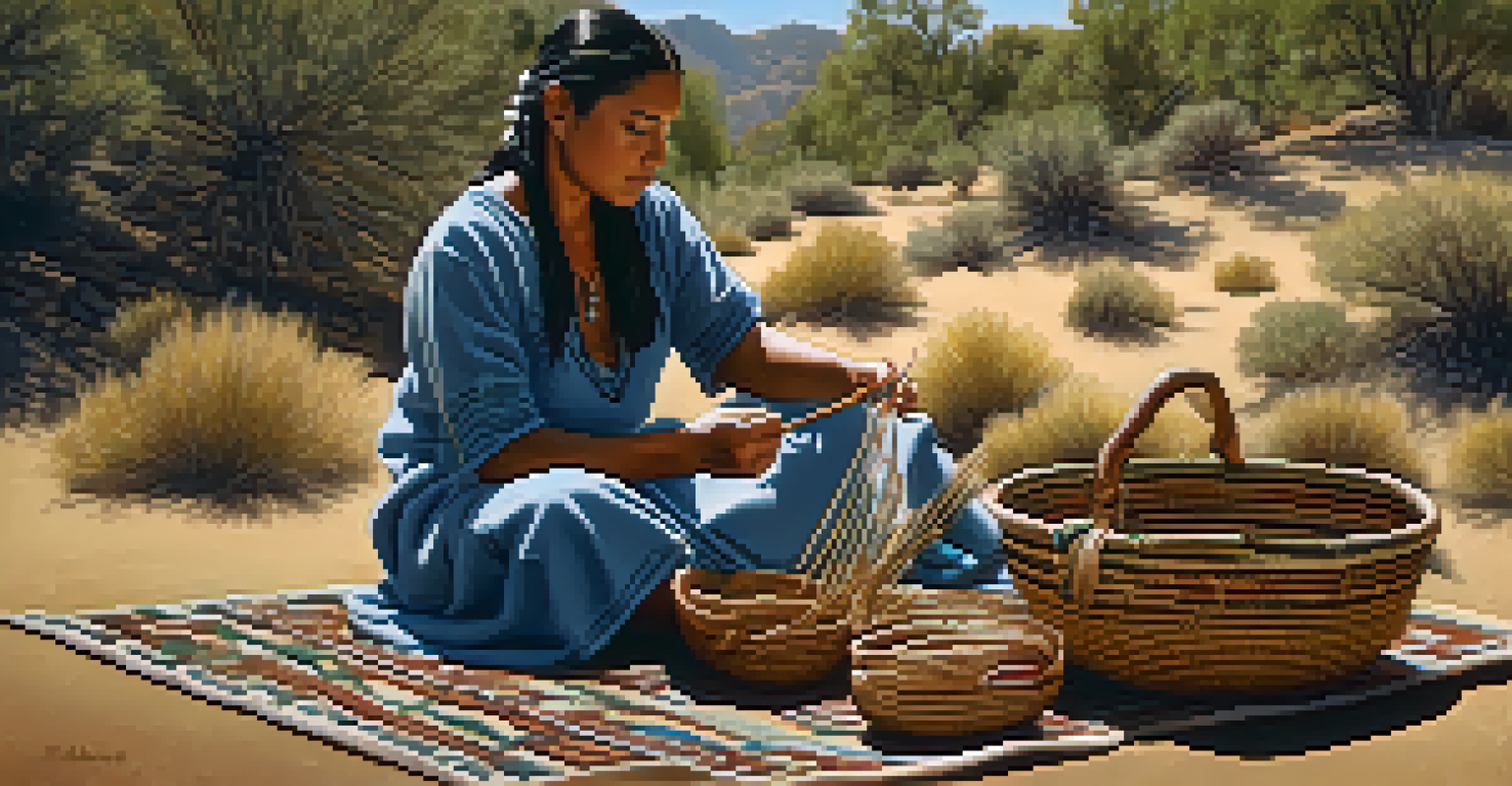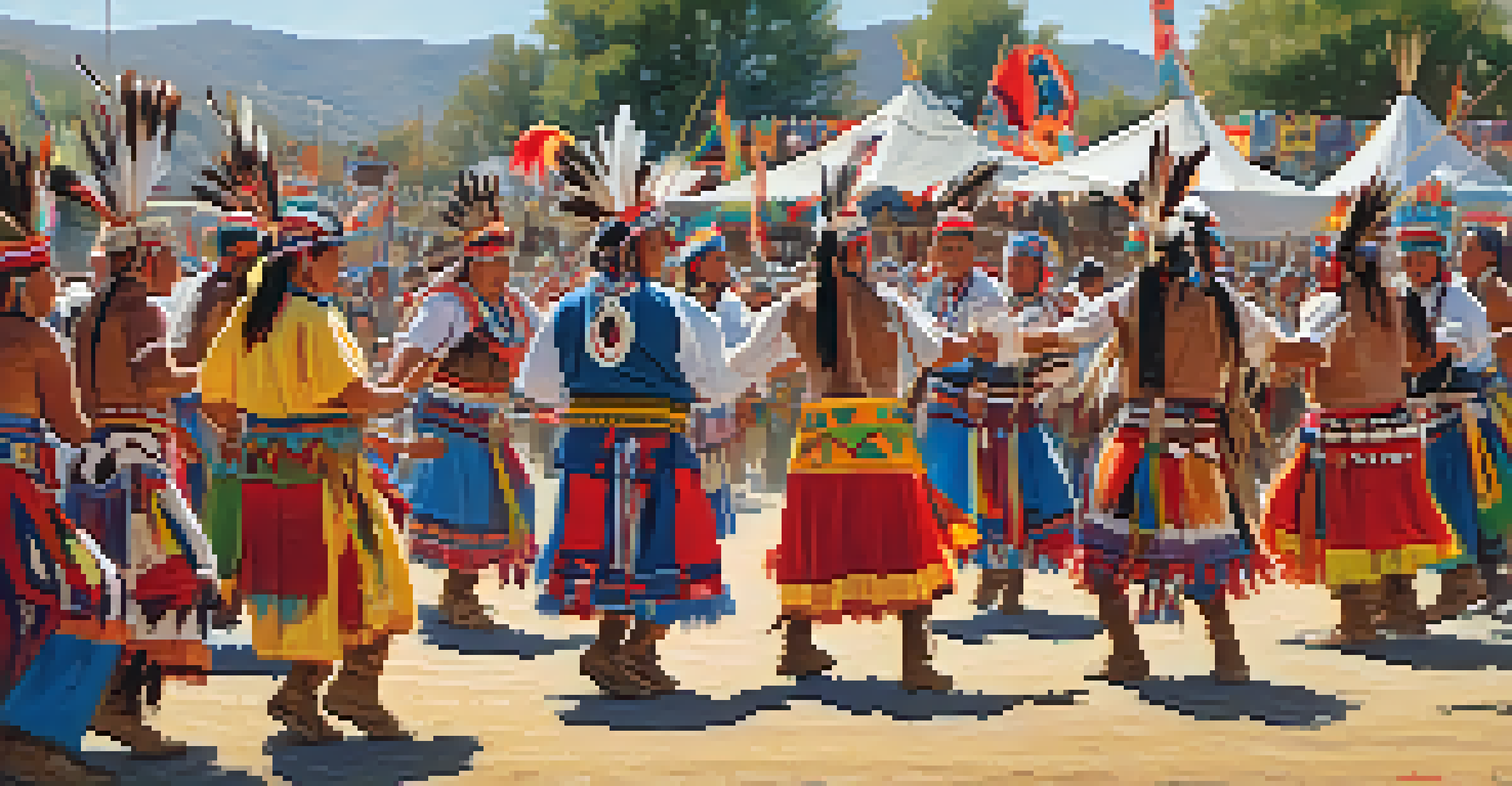The Role of Native American Culture in Big Bear History

The Early Inhabitants of Big Bear Valley
Long before the arrival of European settlers, Big Bear Valley was home to Native American tribes, primarily the Serrano. These early inhabitants thrived in the area, utilizing the abundant natural resources for food, shelter, and cultural practices. The valley's rich biodiversity provided everything from acorns to game, which were staples in their diet.
Preservation of one's own culture does not require contempt or disrespect for other cultures.
The Serrano people developed a deep connection with the land, adopting a lifestyle that was sustainable and in harmony with nature. Their knowledge of the local flora and fauna was profound, allowing them to forage and hunt effectively. This relationship with the environment laid the foundation for their cultural identity, evident in their traditions and spiritual beliefs.
As we explore the history of Big Bear, it's essential to recognize the significance of the Serrano tribe's presence. Their stories and practices have shaped the region's cultural landscape, reminding us of the importance of indigenous heritage in understanding the area's history.
Cultural Practices and Traditions
The cultural practices of the Serrano tribe are rich and varied, encompassing storytelling, art, and spiritual ceremonies. These traditions were not just forms of entertainment but served as a means to pass down knowledge and values from one generation to the next. Storytelling, in particular, played a crucial role in preserving their history and cultural identity.

Art was another significant aspect of Serrano culture, with artisans creating intricate baskets, pottery, and tools that reflected their environment and lifestyle. Each piece often told a story or held cultural significance, showcasing the tribe's craftsmanship and connection to the land. These artworks were not only functional but also served as a form of expression.
Serrano Tribe's Cultural Legacy
The Serrano tribe's rich cultural practices and deep connection to the land have significantly shaped the identity of Big Bear Valley.
Spirituality among the Serrano was deeply intertwined with nature, as they believed that all elements of the earth were interconnected. Rituals and ceremonies often celebrated seasonal changes, harvests, and significant life events, reinforcing their bond with the land and its resources. This spiritual connection remains an essential aspect of their cultural legacy.
The Impact of European Settlers
The arrival of European settlers in the 19th century marked a significant turning point for the Serrano tribe and the broader Big Bear area. With the influx of settlers came new challenges, including displacement from traditional lands and the introduction of foreign diseases. These changes disrupted the Serrano way of life, forcing many to adapt to a rapidly changing environment.
The land is the source of life for every Native American culture. It is our identity and our connection to the past, present, and future.
As settlers established towns and infrastructure, the once-thriving Native American communities faced increased marginalization. The land that had sustained them for generations was now being used for agriculture, mining, and tourism. This shift not only affected their physical territory but also had profound implications for their cultural practices and social structures.
Despite these challenges, the Serrano people found ways to maintain their cultural identity. They adapted their traditions and practices, often blending them with new influences while striving to keep their heritage alive in the face of adversity. This resilience is a testament to their enduring spirit and connection to the Big Bear Valley.
Preservation of Native American Heritage
In recent years, there has been a renewed focus on preserving Native American heritage in Big Bear. Various organizations and local governments have recognized the importance of honoring the Serrano tribe's history and contributions to the region. Efforts include educational programs, cultural events, and partnerships with Native communities to promote awareness.
Museums and cultural centers have become vital spaces for sharing the stories and traditions of the Serrano people. These institutions not only celebrate their past but also provide a platform for contemporary Native voices. Through exhibitions and workshops, visitors can learn about the rich cultural tapestry that defines Big Bear’s history.
Impact of European Settlers
The arrival of European settlers disrupted the Serrano way of life, leading to displacement and cultural challenges that the tribe has worked to overcome.
Furthermore, the resurgence of interest in indigenous rights and environmental stewardship has empowered the Serrano tribe to reclaim aspects of their heritage. By collaborating with local stakeholders, they are working towards a future where their culture is not only acknowledged but celebrated as a vital part of Big Bear's identity.
Modern-Day Serrano Community
Today, the Serrano tribe continues to contribute to the Big Bear community in meaningful ways. Many members are actively involved in local governance, environmental conservation, and cultural revitalization efforts. Their presence is a reminder of the enduring legacy of Native American culture in the region, fostering a sense of pride and identity.
Cultural events, such as powwows and festivals, allow the Serrano to share their traditions with the broader community. These gatherings not only celebrate their heritage but also promote cross-cultural understanding and appreciation among residents and visitors alike. It's a beautiful way to bridge the past with the present.
In addition to cultural initiatives, the Serrano tribe is increasingly focused on sustainable practices that honor their ancestral connections to the land. This commitment to environmental stewardship aligns with their traditional values and serves as an inspiration for future generations. By weaving their cultural principles into modern practices, they continue to shape the identity of Big Bear.
Education and Awareness Initiatives
Educational initiatives play a crucial role in fostering awareness and understanding of Native American culture in Big Bear. Schools and community organizations are increasingly incorporating the history and traditions of the Serrano tribe into their curricula. This effort helps create a more inclusive narrative that acknowledges the contributions of indigenous people.
Workshops and programs led by Native American educators provide firsthand insights into cultural practices, language, and history. These sessions not only serve to educate but also empower Native youth to take pride in their heritage. By sharing their stories and experiences, they inspire others to appreciate the rich cultural landscape of Big Bear.
Preservation Efforts Today
Modern initiatives focus on preserving and revitalizing Serrano heritage, fostering education and awareness within the broader Big Bear community.
Moreover, the digital age has opened up new avenues for outreach and education. Online platforms and social media allow for broader dissemination of information about the Serrano tribe and their culture. This increased visibility helps to foster a deeper appreciation for the history and ongoing contributions of Native Americans in the region.
The Future of Native American Culture in Big Bear
Looking ahead, the future of Native American culture in Big Bear holds promise as communities work towards reconciliation and understanding. The ongoing efforts to preserve and revitalize Serrano traditions are vital in ensuring that their heritage continues to thrive. This cultural revival is not only important for the Serrano people but also enriches the entire community.
Collaboration between local organizations, government entities, and the Serrano tribe is essential for creating supportive environments where indigenous culture can flourish. Initiatives that celebrate Native American history, art, and values contribute to a more diverse and inclusive narrative of Big Bear's past and present.

Ultimately, the integration of Native American culture into the broader community fabric will foster greater respect and appreciation for the contributions of indigenous peoples. By recognizing and honoring this heritage, Big Bear can move forward with a deeper understanding of its history and a commitment to inclusivity.